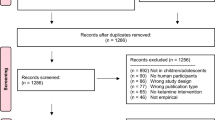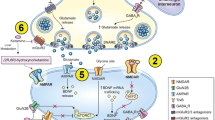Conclusion
Already we know enough about preconditioning to plan our pharmacological reponses appropriately We must concentrate on activation of KATP channels in relevant clinical sitrations. More experiments, although always desirable, are not going to help as much as application of what we already know.
Similar content being viewed by others
References
Baines CR, Goto M, Downey JM (1997) Oxygen radicals released during ischemic preconditioning contribute to cardioprotection in the rabbit myocardium. J Mol Cell Cardiol 29: 207–216
Bolli R (1990) Mechanism of myocardial “stunning”. Circulation 82: 723–738
Cleveland JC, Meldrum DR, Rowland RT et al. (1977) Adenosine preconditioning of human myocardium is dependent upon the ATP-sensitive K+ channel. J Mol Cell Cardiol 29: 175–182
Cohen MV, Downey JM (1993) Ischaemic preconditioning: can the protection be bottled? Lancet 342: 6
Gross GJ, Auchampach JA (1992) Blockade of ATP-sensitive potassium channels prevents myocardial preconditioning in dogs. Circ Res 70: 223–233
Headrick JP (1996) Ischemic preconditioning: bioenergic and metabolic changes and the role of endogenous adenosine. J Mol Cell Cardiol 28: 1227–1240
Ichinari K, Kakei M, Matsuoka T et al. (1996) Direct activation of the ATP-sensitive potassium channel by oxygen free radicals in guinea-pig ventricular cells: its potentiation by MgADP. J Mol Cell Cardiol 28: 1867–1877
Inagaki N, Gonoi T, Clement JP et al. (1996) A family of sulfonylurea receptors determines the pharmacological properties of ATP-sensitive K+ channels. Neurol 16: 1011–1017
Kanda A, Watanabe I, Gettes LS (1996) Pinacidil unexpectedly lessens the rise in extracellular K+ and preserves conduction during acute ischemia. Circulation 1 (Suppl I): I-306
Kantor PF, Coetzee WA, Carmeliet EE et al. (1990) Reduction of ischemic K loss and arrhythmias in rat hearts. Effect of glibenclamide, a sulfonylurea. Circ Res 66: 478–485
King LM, Opie LH (1996) Does preconditioning act by glycogen depletion in the isolated rat heart? J Mol Cell Cardiol 28: in press
Kolocassides KG, Galinanes M, Hearse DJ (1996) Dichotomy of ischemic preconditioning. Improved postischemic contractile function despite intensification of ischemic contracture. Circulation 93: 1725–1733
Lawson CS, Downey JM (1993) Preconditioning: state of the art myocardial protection. Cardiovasc Res 27: 542–550
Opie LH (1989) Reperfusion injury and its pharmacologic modification. Circulation 80: 1049–1062
Speechly-Dick ME, Grover GJ, Yellon DM (1995) Does ischemic preconditioning in the human involve protein kinase C and the ATP dependent K+ channel? Studies of contractile function after simulated ischemia in an atrial in vitro model. Circ Res 77: 1030–1035
Author information
Authors and Affiliations
Rights and permissions
About this article
Cite this article
Opie, L.H. Preconditioning: We do not need more experiments, because our current knowledge already permits us to develop pharmacological agents. Basic Res Cardiol 92 (Suppl 2), 46–47 (1997). https://doi.org/10.1007/BF00797208
Issue Date:
DOI: https://doi.org/10.1007/BF00797208




